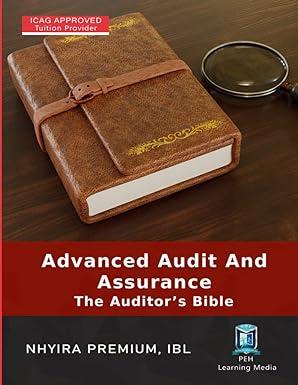Question
Problem 3-15 Journal Entries; T-Accounts; Financial Statements [LO3-1, LO3-2, LO3-3, LO3-4] Froya Fabrikker A/S of Bergen, Norway, is a small company that manufactures specialty heavy
Problem 3-15 Journal Entries; T-Accounts; Financial Statements [LO3-1, LO3-2, LO3-3, LO3-4]
Froya Fabrikker A/S of Bergen, Norway, is a small company that manufactures specialty heavy equipment for use in North Sea oil fields. The company uses a job-order costing system that applies manufacturing overhead cost to jobs on the basis of direct labor-hours. Its predetermined overhead rate was based on a cost formula that estimated $360,000 of manufacturing overhead for an estimated allocation base of 900 direct labor-hours. The following transactions took place during the year: Raw materials purchased on account, $200,000. Raw materials used in production (all direct materials), $185,000. Utility bills incurred on account, $70,000 (90% related to factory operations, and the remainder related to selling and administrative activities). Accrued salary and wage costs: Direct labor (975 hours) $ 230,000 Indirect labor $ 90,000 Selling and administrative salaries $ 110,000 Maintenance costs incurred on account in the factory, $54,000. Advertising costs incurred on account, $136,000. Depreciation was recorded for the year, $95,000 (80% related to factory equipment, and the remainder related to selling and administrative equipment). Rental cost incurred on account, $120,000 (85% related to factory facilities, and the remainder related to selling and administrative facilities). Manufacturing overhead cost was applied to jobs, $?. Cost of goods manufactured for the year, $770,000. Sales for the year (all on account) totaled $1,200,000. These goods cost $800,000 according to their job cost sheets. The balances in the inventory accounts at the beginning of the year were: Raw Materials $ 30,000 Work in Process $ 21,000 Finished Goods $ 60,000 Required: 1. Prepare journal entries to record the preceding transactions. 2. Post your entries to T-accounts. (Dont forget to enter the beginning inventory balances above.) 3. Prepare a schedule of cost of goods manufactured. 4A. Prepare a journal entry to close any balance in the Manufacturing Overhead account to Cost of Goods Sold. 4B. Prepare a schedule of cost of goods sold. 5. Prepare an income statement for the year.
Step by Step Solution
There are 3 Steps involved in it
Step: 1

Get Instant Access to Expert-Tailored Solutions
See step-by-step solutions with expert insights and AI powered tools for academic success
Step: 2

Step: 3

Ace Your Homework with AI
Get the answers you need in no time with our AI-driven, step-by-step assistance
Get Started


